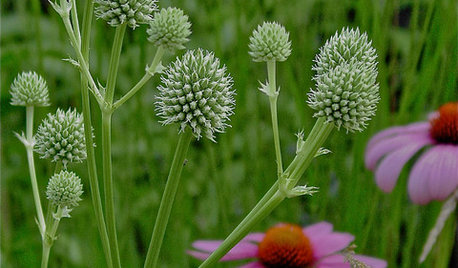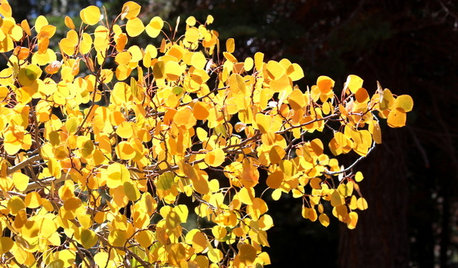iris borer question
mrtoad
15 years ago
Related Stories

FLOWERSPaint a Garden Delightful With Iris
Charming and colorful, irises propagate easily, are hardy in many soils and climates, and unfold with layers of beauty
Full Story
FUN HOUZZHouzz Quiz: What's Your Decorating Style?
Answer these 9 questions to find out what decorating style suits you best
Full Story
GARDENING GUIDESGreat Native Plant: Rattlesnake Master for Unique Interest
Serpents actually don’t give a hoot about this prairie wildflower, but insects do — and the foliage is a big draw too
Full Story
MY HOUZZMy Houzz: With TLC, a Former Dutch Nursery Estate Blossoms
A family buys a run-down estate in the Netherlands and brings it back to life
Full Story
GARDENING GUIDES10 Easy Edibles for First-Time Gardeners
Focus on these beginner-friendly vegetables, herbs, beans and salad greens to start a home farm with little fuss
Full Story
LANDSCAPE DESIGNGreat Design Plant: Quaking Aspen for 3-Season Beauty — on Its Own Turf
It offers bright fall foliage, snowy winter bark and lush green leaves in summer. Just don't try to plant quaking aspen away from its home
Full Story
EDIBLE GARDENSHow to Grow Your Own Peaches and Nectarines
Make gardening a little sweeter with these juicy fruits, which you can eat after plucking or preserve for later
Full Story
MORE ROOMSTell Us: How Would You Light This Room?
See if You Have the Solution For This Unusual Space
Full Story
GARDENING GUIDESLessons in the Rewards of Selfless Gardening
Let go of gardening for your own vision and watch the garden’s own true vision come forth
Full Story
FALL GARDENING7 Reasons Not to Clean Up Your Fall Garden
Before you pluck and rake, consider wildlife, the health of your plants and your own right to relax
Full StorySponsored






shapiro
berrytea4me
Related Professionals
West Milford Landscape Architects & Landscape Designers · Wrentham Landscape Architects & Landscape Designers · Citrus Heights Landscape Architects & Landscape Designers · Cottonwood Landscape Architects & Landscape Designers · Otsego Landscape Architects & Landscape Designers · Salem Landscape Contractors · Wakefield Landscape Contractors · Cupertino Landscape Contractors · Dunwoody Landscape Contractors · El Sobrante Landscape Contractors · Hollywood Landscape Contractors · Peachtree City Landscape Contractors · Pleasanton Landscape Contractors · Soddy Daisy Landscape Contractors · Oxon Hill Landscape ContractorsmrtoadOriginal Author
mike_g_
mrtoadOriginal Author
phantomfyre
mrtoadOriginal Author
marymarie2007